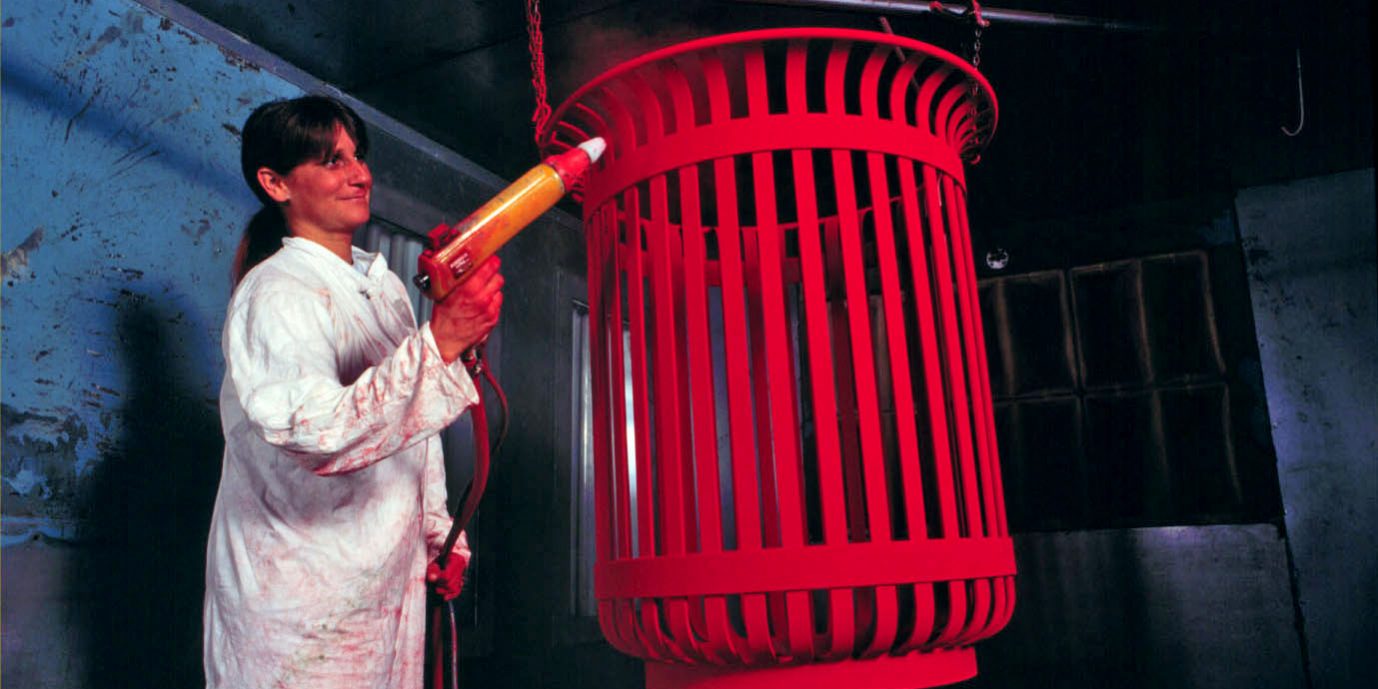Ever wonder how the idea for powder coating was developed in the first place? What are the advantages – and where is it used?
In this article, we’ll take a brief look at the history of powder coating, why the technique has grown in popularity over the years, its benefits and where it’s used in various industries.
A brief history
The powder coating process was first developed in the 1940s and early 1950s. Initially, organic polymers (or macromolecules) were “flame-sprayed” in a powder form onto metallic bases.
Then in the early 1950s, a German scientist named Dr. Erwin Gemmer developed (and then patented) a fluidized-bed process for thermosetting powder coatings. This method was much quicker and more efficient than flame-spraying, and from 1958 onward, almost all powder coatings were processed using fluidized-bed applications.
At the time, American manufacturers took note – but they still didn’t have the right equipment to make the process accurate, efficient and cost-effective enough to serve as a real coating solution for most industries.
However, in the 1960s and early 1970s, two developments combined to build new interest in the powder coating process: 1) The growing ecology movement, and 2) New application techniques. It was really a combination of these two things that led to the method’s growth and success.
In the 1960s, application by electrostatic spray – where powder particles are charged and then sprayed onto a grounded material – was developed. The powder particles stick by electrostatic attraction, melt and are then cured in ovens. The electrostatic spray process helped powder coating become an environmentally-friendly, convenient and more affordable option for a wide variety of industries, and one that is still used today.
Powder coating’s uses & advantages
Continued interest in environmental and human safety, as well as new environmental laws, have helped the process continue to develop. In addition to the fact that powder does not release volatile organic compounds (VOCs) into the atmosphere like wet paints, powder coating:
- Can be applied at different thicknesses without running
- Is durable and long-lasting, even when exposed to heat, water and UV rays
- Can provide a variety of finishes and textural effects
- Provides a more flexible coating than wet paint
- Cures more quickly than liquid coatings (due to the final baking process)
Plus, powder that doesn’t stick to the part being sprayed can be collected and reused later, so there’s far less waste than with paint.
Today, powder coating is used most often for metal parts, furniture and equipment, but it is also used for plastics, wood, composites, glass and MDF (medium-density fiberboard). It’s used in dozens of industries for a huge array of items including:
- Agricultural tools & tractors
- Boating & marine supplies
- Airplanes & aerospace equipment
- Signage
- Military applications
- Household appliances, as well as HVAC systems
- Sports equipment
- Patio furniture
- Playground equipment
- Window and door frames
- Metal facades (in architecture)
- Auto parts, including wheels, engine components, frames and more
- Electronics
- And many more.
Wondering if powder coating is the right choice for your project? Contact our experts at Excell Coatings today
